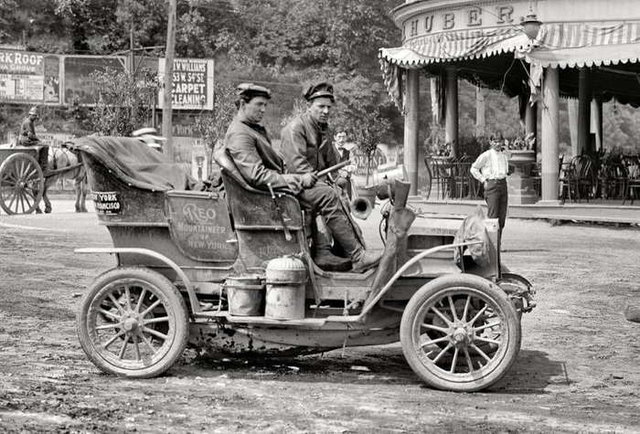In 1906, 167 cars crisscrossed the streets of Montreal in the midst of streetcars, horse carts and pedestrians.
At this time people also had to make their own license plates as the Legislative Assembly had passed its first motor vehicle law.
It didn’t take long to understand that cars would forever change the peaceful city of Montreal. In 1910, to control "cowboy drivers," the first tickets were issued to wayward motorists who didn’t give priority to horse drawn carriages. That same year, the first traffic police were appointed.
In just under 20 years, the number of cars in Quebec had increased from 167 to nearly 100,000. In 1924, the fastest car was the Ford T, nicknamed the black spider because of its high wheelbase and its top speed of 80 km/h. In Quebec, it marked the year of the first Highway Code.
Twenty years later, 455,000 vehicles are now crisscrossing Quebec's roads. In 1938, there was a disastrous safety record with more than 10,000 accidents and 402 victims. In order to standardize road signage and to counteract the same problems we face today, the Highway Code is expanding to include new sections concerning driving while intoxicated, hit-and-run accidents and dangerous driving.
In 1952 our famous driver's license was introduced. In fact, the Duplessis government established the Ministry of Transport, which directly addressed the competence of drivers and mechanics. By 1955, aspiring drivers were now required to pass a driving test.
In 1978, the Régie de l'assurance automobile du Québec was created, which, with its 400 employees, is now shaping the way we drive. It’s also the year Lise Payette changes the license plate slogan " La belle Province" to the current "Je me souviens".
Finally, in 1990, the Régie de l'assurance automobile du Québec becomes la Société de l'assurance automobile. With its unique integrated management model, it encompasses prevention, control, compensation and rehabilitation.





